LifeBEAM Smart Helmet with Integrated ANT+ Heart Rate Sensor In-Depth Review
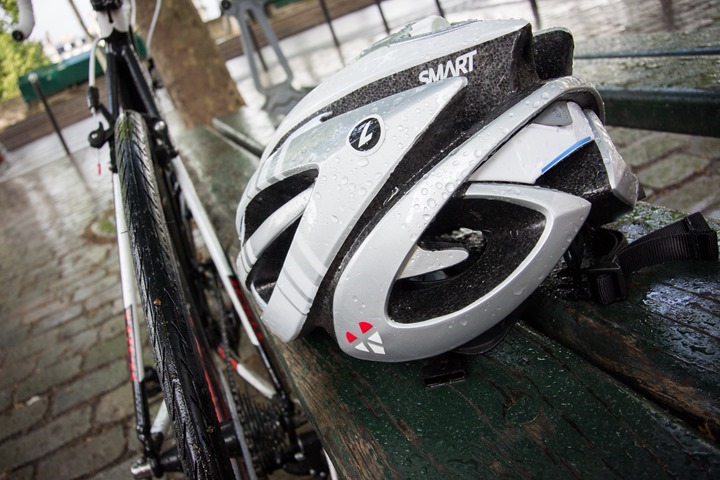
It’s been almost a year since the LifeBeam SMART helmet hit the interwebs via a Kickstarter crowd-funded effort. Since then they’ve iterated through prototypes, status updates, and then ultimately a few months back – delivery of the actual product. It would be the first ANT+ enabled heart rate (HR) sensing cycling helmet (perhaps the first HR helmet at all for that matter). They’d also be simultaneously introducing a Bluetooth Smart version as well. Both options were set to allow you to broadcast your HR straight to compatible devices (such as a GPS bike computer or phone), without the need for a HR strap.
I got the unit I paid for earlier this winter and have been using it on all my rides since. Yes, even some of my indoor rides. I’ve got tons of data, from cold days to hot days (such as recently in Florida). And from dry days to very wet days. Lots of sweat indoors and no sweat outdoors. In the course of that I’ve been charting the data against one or more additional HR monitoring devices on all these rides, allowing me to see how well the unit actually performs. Obviously, accuracy is the most important thing here if you’re going to pay extra for such a device.
So with that, let’s dive into the whole kit and ultimately whether or not I think it’s worthy of a ride.
Unboxing:
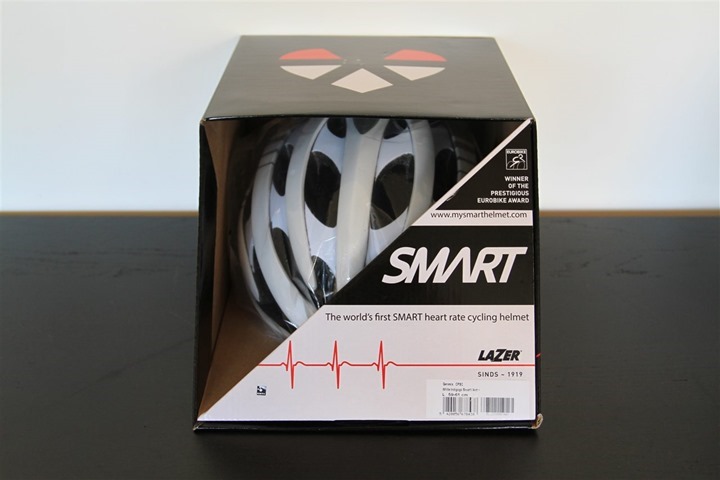
If you were shopping in a local bike shop, you’d likely not even notice the fact that this helmet was terribly different than any other. From the outside, the box looks basically like any other helmet box – minus the addition of the little pulse-looking graphic on the front.
Most importantly though on the front is the tiny little ANT+ symbol, which indicates its an ANT+ device. Should you have bought the Bluetooth Smart variant, you’ll find that logo instead.
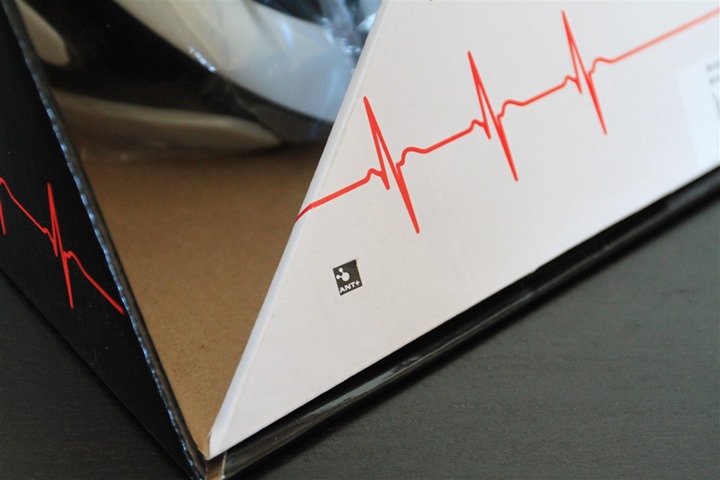
Unpacking the box you’ve got the below collection of goods. First is the Lazer Sport GENESIS helmet, which the electronics were fit into/onto.
Then there’s some paper manual stuffs, a USB charging cable, tiny adjustment pads, and a handy little carrying bag.
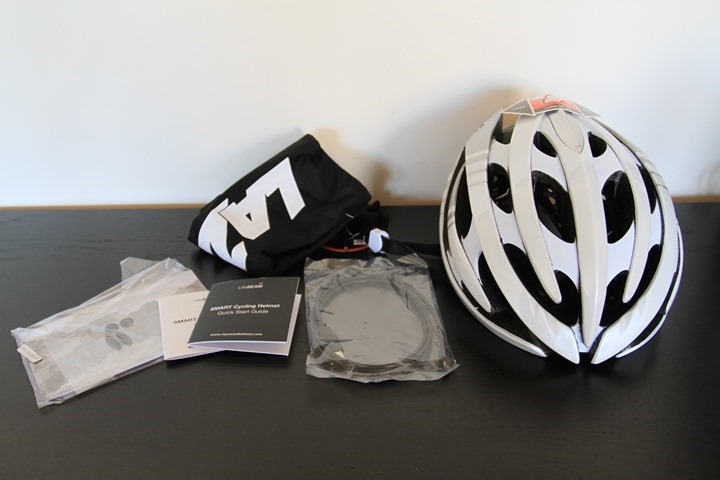
Here, the micro-USB cable. It’s the same as almost every phone cable on the planet these days except iPhone’s:
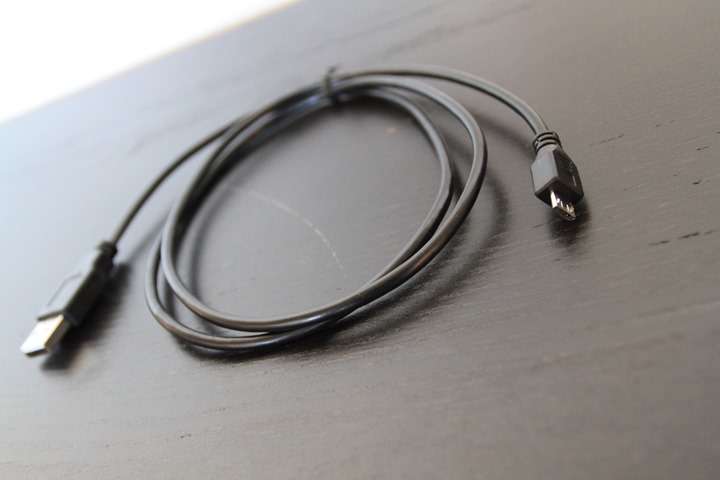
And the manual, indicating the different LED lights. Ultimately, all you’ll really need to know is that blue light on = helmet on, blue light off = helmet off.
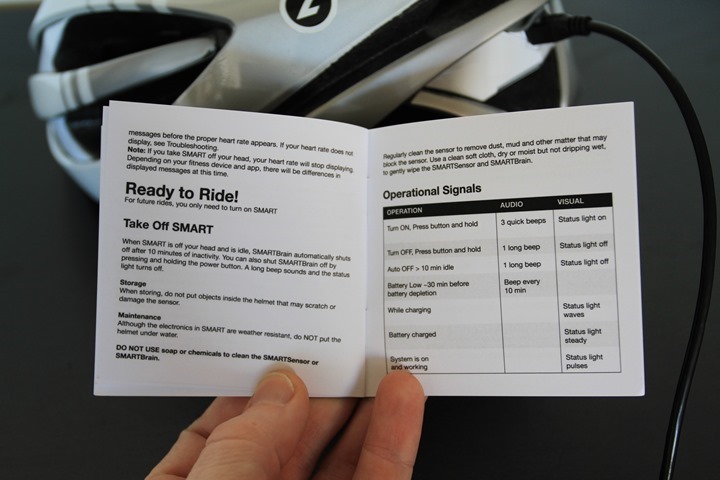
As noted, the helmet includes a carrying bag – which is a nice gesture. I’ve found it’s pretty durable for travel though without the bag, as I’ve attached it directly to the outside of my backpack on a recent trip to the US, which includes all assortment of planes, trains and automobiles – with the thing bonking around off various objects while strapped to the back.
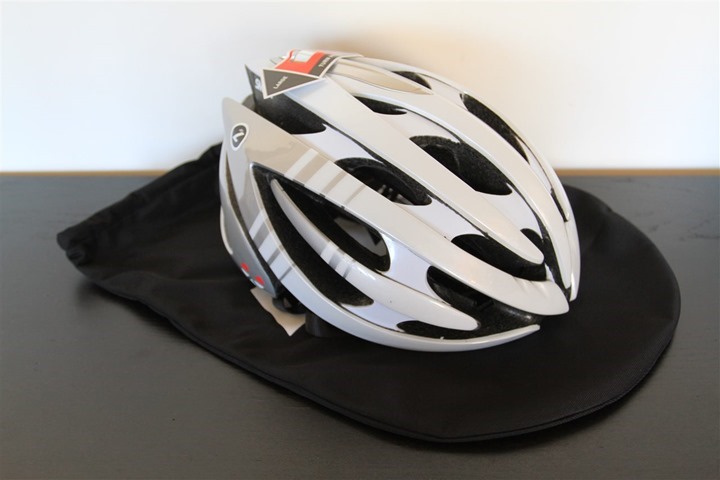
Inside the helmet you’ll have a few labels. The ones below on the left side are less important:
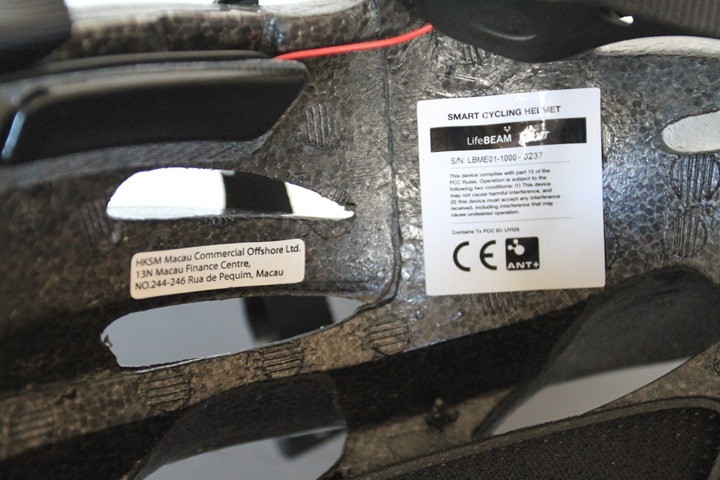
However, the ones on the right side are fairly important, as it includes the CPSC safety label. Without said label most races won’t let you participate. This is especially true of triathlons that might check such helmets (officials only check aero helmets, but sometimes if they see something out of the ordinary, they’ll check it too).
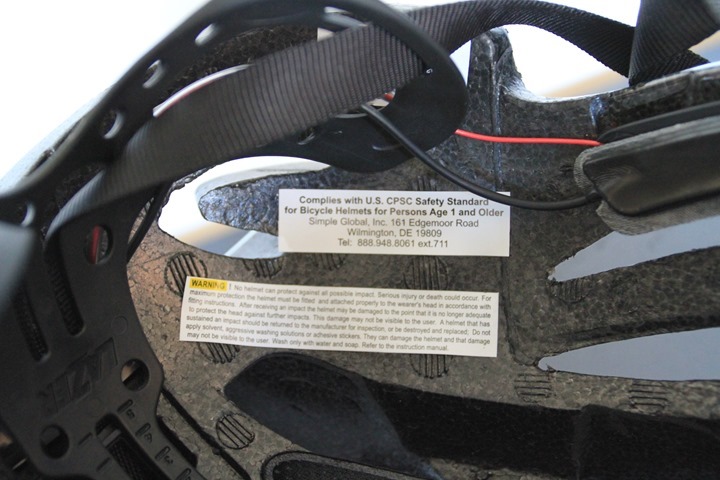
At the very front is the tiny heart rate sensor. But I won’t get too far ahead of ourselves yet. We’ll get into that in a second.
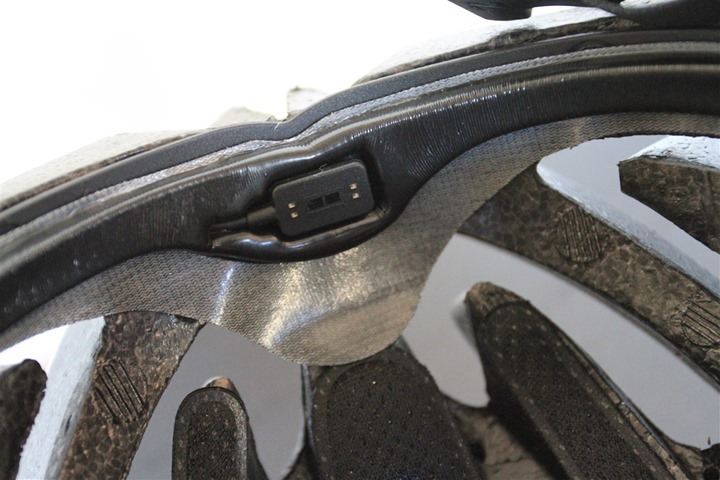
Lastly, when it comes to the weight of the helmet, I measured it at 409g. For comparison, my other helmet (without any ‘smartness’ to it), came in at 220g. The Girl’s helmet (which is a smaller size), came in at 272g.
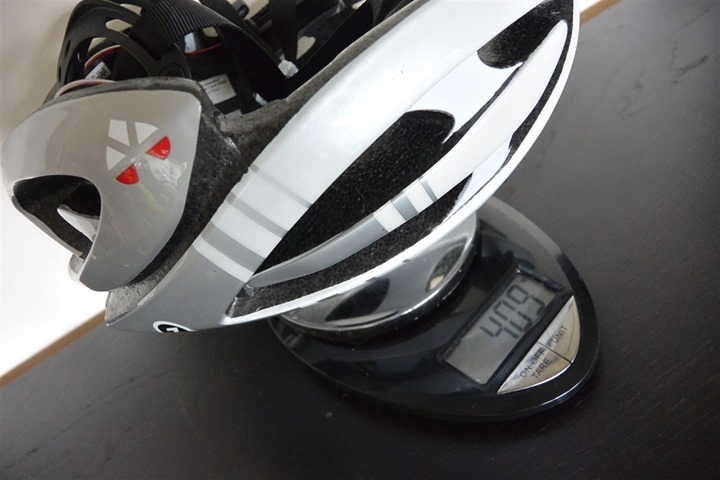
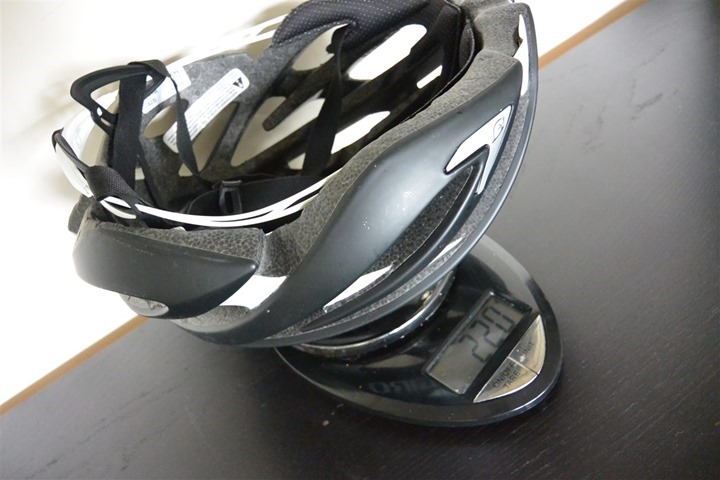
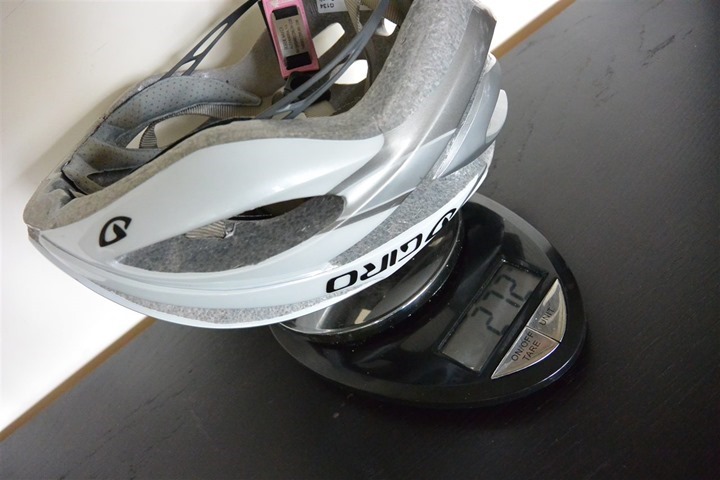
Despite being a fair bit heavier, I really didn’t notice the weight. Ultimately, we’re not talking a ton of weight in the grand scheme of things (though I definitely realize some cyclists are very focused on helmet weight).
With all the contents surveyed, we’ll go and get into the basic day to day use of the unit.
Basic Operation:
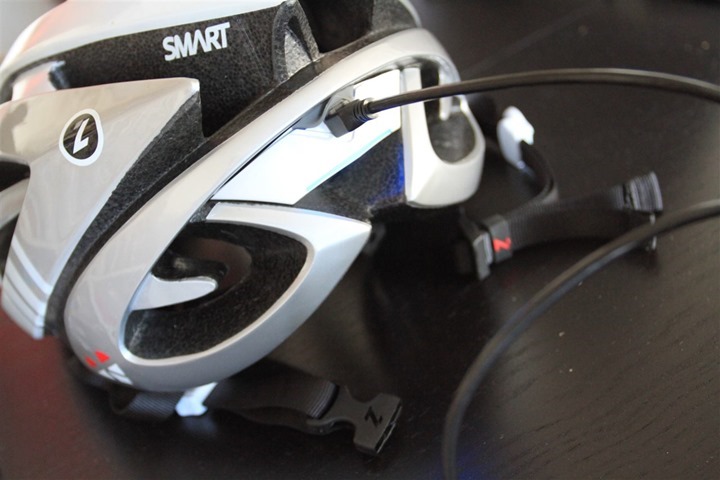
Because the the helmet does have electronics within it, it does need some sort of battery. In this case, it’s powered by a USB re-chargeable battery that has a small USB port on the back of the helmet protected by a rubber door. As noted above, the cable is a standard micro-USB cable and can be plugged into either a computer or any USB outlet you’ll find.
The battery is designed to last 13-15 hours between charges. And though I didn’t have any 15 hours rides to validate that, I never had an issue with the unit not having power (and I recharged only about once every 1-2 weeks).
Inside the helmet you’ll see a few tiny wires running from the battery compartment in the back to the sensor in the front. These provide power and the HR data to the communications transmitter in the rear of the helmet.
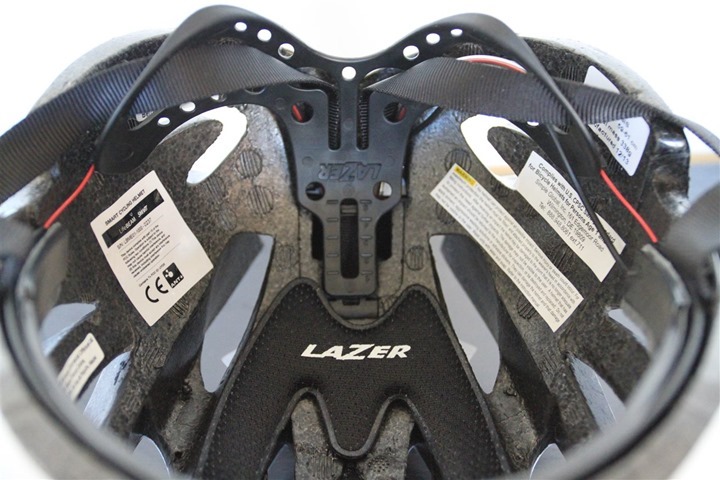
While I didn’t attempt to remove the entire wired setup (it was firmly affixed), I do know of at least one reader that was able to successfully remove it and ‘re-install’ everything into a different helmet (with a bit of modification). Obviously, not something you’d do over a coffee-break – but within the realm of possible for the more DIY geeks.
For me, I just stuck with the helmet as-is. In doing so, I used the little scrolling nob on the top to tighten it down to my head. You can use this to tighten/loosen the helmet inside. Also, the chin-strap is exceedingly long, so you can trim that as well (like most helmets).
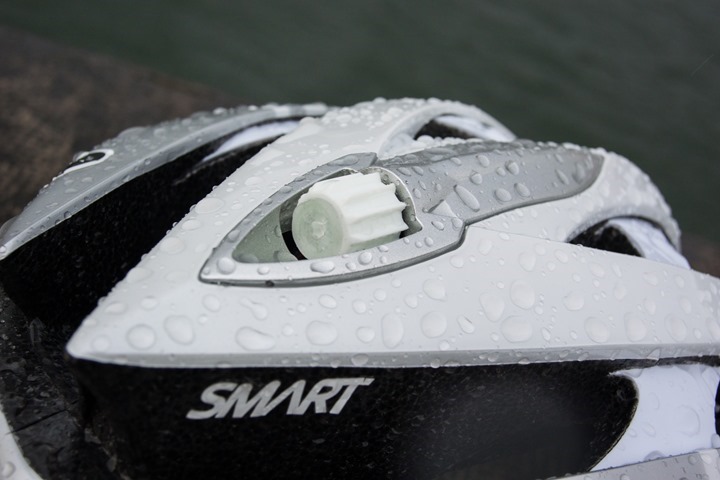
When it comes to the operation, everything is controlled by the rear pod. This is where the USB port is as well as the power button. To turn it on you simply hold down the button below the blue light bar for a few seconds, and it’ll chirp that it’s on. To turn it off, you do the same. The unit will automatically go into a power saving mode if not used for 10 minutes.
The blue bar on the back slowly glows on and off, indicating the helmet is currently powered on.
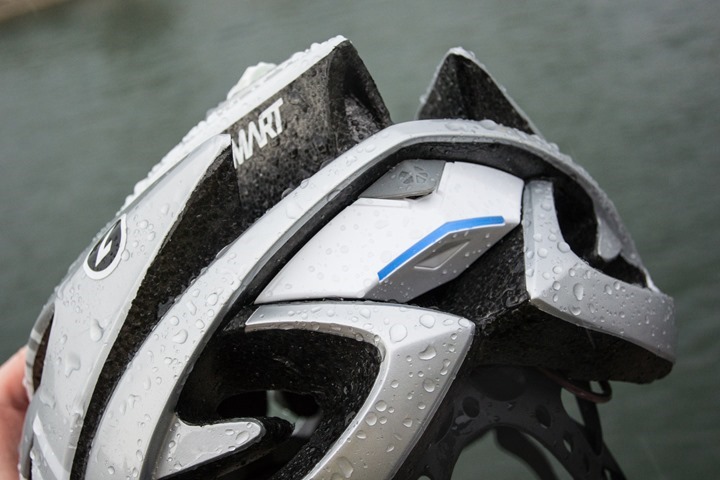
I found it took about 5-10 seconds for it to find my heart rate upon putting it on – typical for most optical sensors. Once it found my heart rate, I was good to go.
When it comes to the optical heart rate sensor, it’s situated on the front of the helmet, just at your forehead. This measures blood-flow and is able to produce a pulse reading. The company actually started off doing helmets for fighter jet pilots and astronauts with the same technology. Despite what The Girl sometimes thinks (or wants) though, I’m not going to the moon anytime soon. But, the technology thus far appears to work equally as well here on earth (as I detail in the next section).
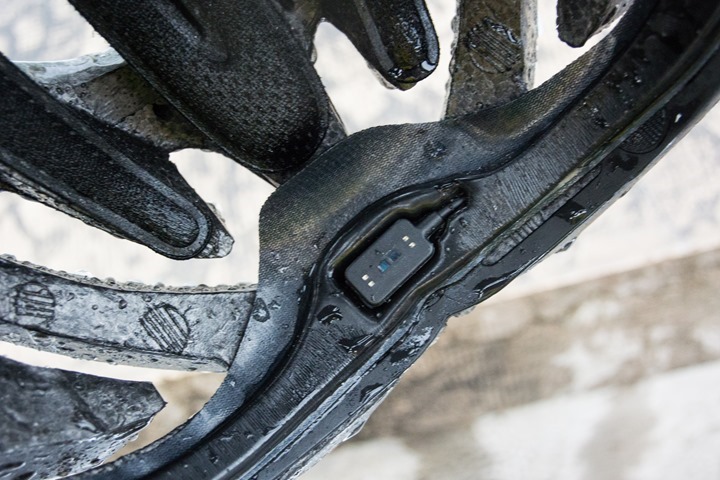
Unlike most other optical sensors however, you won’t actually see any green (or yellow, or red) light emitted visually from it. It just looks like above, all the time. The underlying sensor will ultimately be seen in other products as the company has recently signed deals with a number of other entities for placement of the sensors in 3rd party products.
Connected devices (ANT+ or Bluetooth Smart editions):
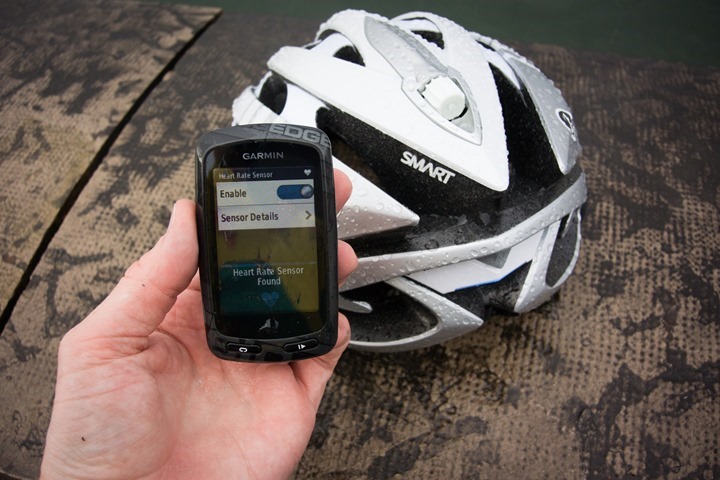
The singular reason you’d buy the Smart helmet over other helmets is because of the heart rate sensor connectivity. It should go without saying that if you don’t plan to use such connectivity, you should close this browser tab now and go onto something more productive…like watching YouTube.
The helmet comes in two flavors: ANT+ or Bluetooth Smart. The two dominant low-power wireless transmission protocols used in sport devices today.
ANT+ is used in all Garmin devices, as well as Timex, Magellan, Suunto and a slew of others. Bluetooth Smart meanwhile has predominantly been used connecting to mobile phones – but as of late some newer devices are indeed supporting it (like the Polar V800 and V650, and TomTom watches). On the ANT+ side, it’ll work with any ANT+ device that’s capable of utilizing heart rate. And on the Bluetooth Smart side it’ll work with any app that’s capable of Bluetooth Smart HR profile reception (i.e. Strava, MapMyFitness, etc…).
LifeBEAM (the company) plans to offer a dual-protocol version in about two months, which would be inline functionality-wise with what most heart rate sensor related companies are doing these days. This would transmit on both ANT+ and Bluetooth Smart concurrently, so you don’t have to buy one version or the other.
Since I bought the ANT+ edition, let’s focus on that. I suspect that as it stands today the majority of cyclists would likely buy the ANT+ version since said majority of cyclists interested in this product would probably have a Garmin GPS bike computer (or other ANT+ enabled cycling unit).
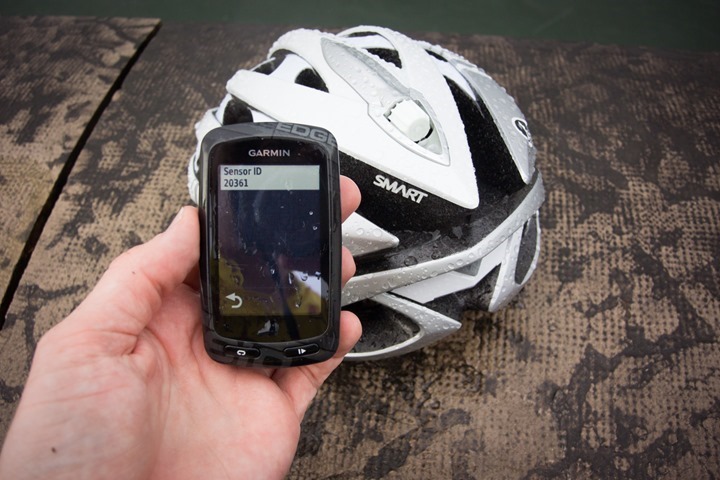
To pair with my Garmin Edge unit, I simply went into the heart rate strap pairing menu and told it to search for the sensor. A few seconds later it found the helmet and then I was able to validate the ANT+ ID displayed as well:
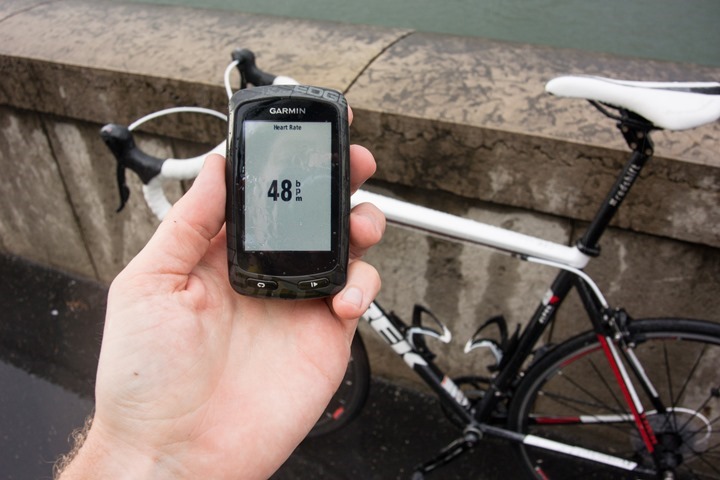
From there on out it’ll automatically be paired for future rides, and above, you can see my heart rate. Of course, you can display your heart rate in BPM or via zones, depending on what your specific cycling unit supports.
Optical HR Accuracy Geekfest:
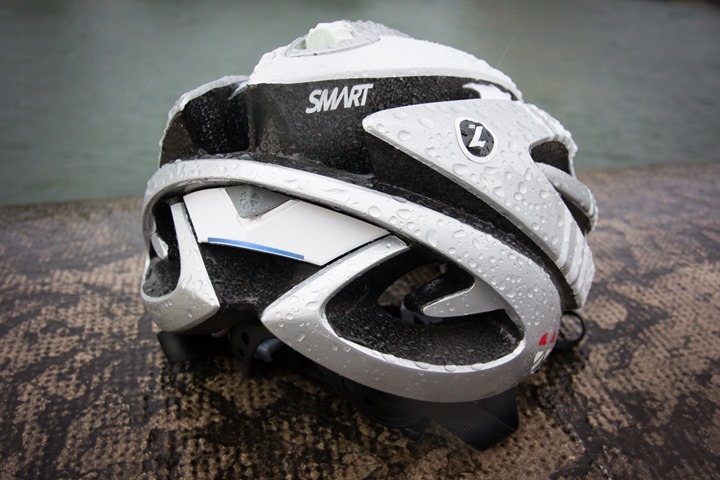
Of course, no amount of pretty blue lights mean anything if the unit actually doesn’t measure heart rate accurately. Thus, I’ve done my usual job of recording rides with multiple heart rate devices to validate accuracy. These devices include both traditional HR straps (ECG) as well as as other optical sensors by other companies. While I have months of data, I’ll just boil it down to a few random snippets to demonstrate what I’ve seen.
Ride A:
This was actually a ride from just last week in 80°F Florida (with lots of sun, which can sometimes be an issue for optical sensors). As you can see the numbers aligned spot-on against not only one strap, but against two other optical units. I saw a brief excursion of the Scosche unit (that blue spike), which is interestingly the only spike I’ve ever seen with that product in running or riding.

Ride B:
This was a mixed city ride and park ride, thus with lots of stops and starts – with the middle section being loops around a park without any cars/traffic/stops. As you can see, things track very closely. There appears to be one point in the first few minutes where it diverges briefly when I increase effort quickly, and then the same about 1/3rd of the way through for a few seconds in delay. But otherwise everything tracks my increases/decreases in intensity quite well.

Ride C:
In this ride I actually drove to a park where I do loops on closed roads and then proceeded to ride the loops. Thus why the effort is quite smooth. I see that the HR strap and the helmet tracked quite well, with the Mio Link having a bit of difficulty in the first 90 seconds and then locking in and matching for the remainder of the ride.

Ride D:
In the below ride, which happens to be a trainer ride, I did a few short high-intensity intervals in the middle of it, causing my heart rate to quickly rise and fall. Interestingly, I saw a bit of a delay in this activity – which I hadn’t seen at other times. Note that the heart rate data is captured by all devices at once, so it’s not a case of two sets of data being offset.
This really amounts to just a couple of seconds of delay – and is something I hadn’t seen with any of the other test runs I did, so I think it’s just a one-off oddity.

I do want to point out that The Girl did wear the helmet for one indoor ride testing data. But ultimately the helmet was too loose on her (since it didn’t go small enough), and as a result I saw significant variations in data in that case. Given that any HR monitoring device requires a proper fit – this makes sense.
In summary, I’m just not seeing any issues with the accuracy of the sensor used here, for me. Nor am I seeing any issues with weak signals or the like from the ANT+ transmitter (occasionally a problem on some sensor devices). Overall, things look very solid.
Comparison Charts:
Starting with this review I’ve introduced a new category into the product comparison chart – the heart rate sensor category. This category includes a combination of leading edge heart rate devices that have some form of ‘unique’ aspect to them. For example, this helmet, or other optical sensors. Or HR straps that transmit underwater, or capture running metrics.
To that end, the below chart is only a handful of products I’ve added to that database. Thus, if you want to mix and match other products you can use the full product comparison tool here to do so (it allows you to add more products than seen below).
Copyright DC Rainmaker – Updated December 12th, 2016 @ 5:54 amNew Window
Price$249$59$79$79
Product Announce DateMar 2013Jan 6th, 2014Jan 6th, 2014Jan 7th, 2013
Product Availability DateJan 2014Apr 2014Apr 11th, 2014July 2013
Measurement TypeOpticalECGOpticalECG
Typical PlacementHead (Helmet)Chest StrapWrist StrapChest Strap
Battery Life13-15 hours1-2 years8-10 hrs200 hours
Battery TypeUSB rechargeableCoin Cell CR2032USB rechargeableCoin Cell CR2032
ANT+Yes (specific Model)YesYesYes
Bluetooth SmartYes (specific Model)YesYesYes
Dual concurrent ANT+/BLENoYesYesYes
Analog for gym equipmentNoNoNoNo
Usable HR data underwaterNoNoDepends: If on same wrist, YMMV.No
Bridging ANT+ to Bluetooth SmartNoNoNoYes
Can record activity w/o 2nd deviceNoNoNoNo
Run PaceNoNoNoNo
Run CadenceNoNoNoNo
Run Economy/MetricsNoNoNoNo
Cycling Power Meter EstimationNoNoCan pass through ANT+ PM’s
Valid HRV/RR dataNoYesNoYes
Requires Bluetooth Smart Phone for ConfigurationNoNoYes (for HR zones)Yes (for bridging only)
Firmware UpdateableNoYes (iOS/Android)YesYes
Amazon LinkN/ALinkLinkLink
Clever Training – Save a bunch with Clever Training VIP programN/ALinkLinkLink
More InfoLinkLinkLinkLink
Again, remember you can mix and match and create your own comparison against additional HR products not shown above. Think of it like going to the ice cream parlor and making your own sundae.
Summary:
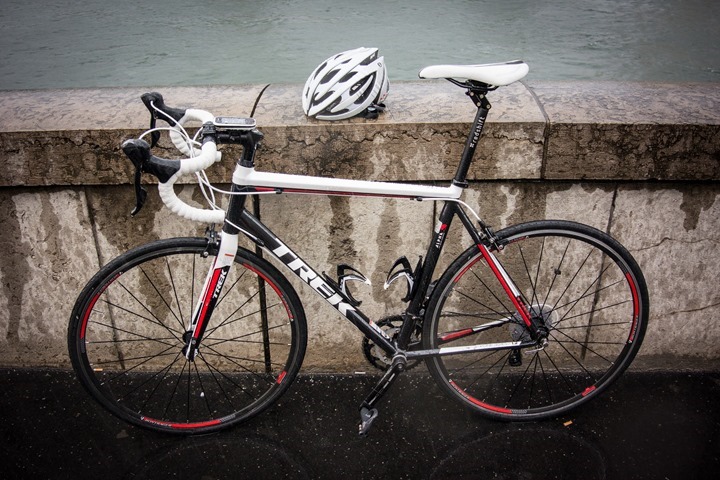
At the end of the day, the helmet does what it says it does, and does it well. It allows you to ride heart-rate strap free while still getting heart rate data. The accuracy of the sensor technology appears solid based on my testing (and, at least, based on my body). And the build of the helmet in total feels solid and seems to withstand crappy riding conditions well.
Of course, there is the reality though that you would now have one more thing to charge. For most riders, that’d be charging it once every 1-2 weeks depending on how much you ride. I found it held a charge well, where in cases that I was travelling for a few weeks I had no problems coming back to using it without charging. And of course, if you don’t like this particular style/model of helmet, then you’re currently up a creek without preforming some helmet transplant surgery.
I’d have no problem recommending it, though, I think unless you needed it immediately it may be worth waiting until they release the new dual ANT+/BLE models in about two months – since that will make the unit effectively ‘future-proof’ in that you can choose any sports device on the market today without concern for protocols. Further, the helmet is a bit pricier than it was when it initially hit crowd-funding sites at sub-$200. Where now it’s $249US.
As always, thanks for reading! And if you have any questions – feel free to drop them below!











